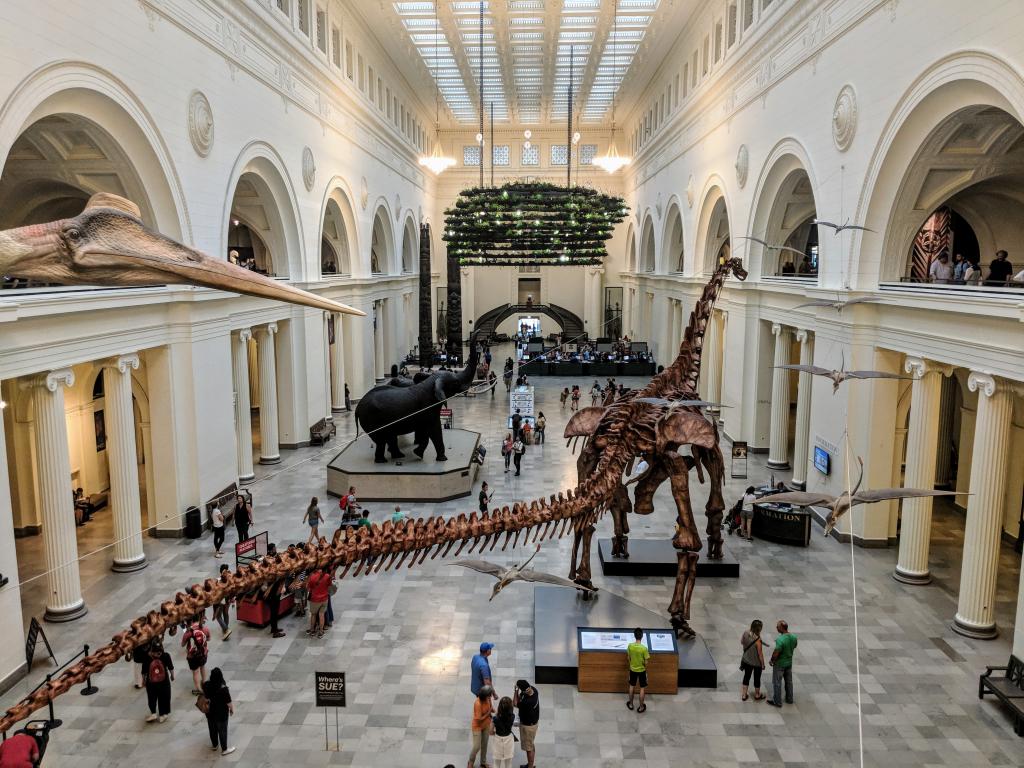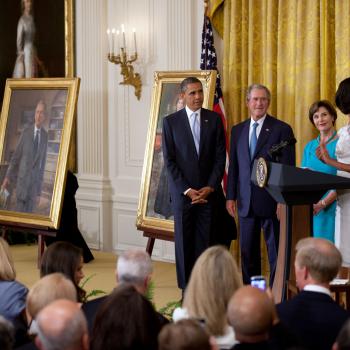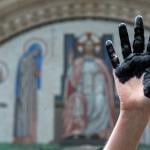![https://commons.wikimedia.org/wiki/File%3ASues_skeleton.jpg; By Connie Ma from Chicago, United States of America [CC BY-SA 2.0 (http://creativecommons.org/licenses/by-sa/2.0)], via Wikimedia Commons](https://wp-media.patheos.com/blogs/sites/533/2017/09/800px-Sues_skeleton.jpg)
And maybe that’s just fine.
This was actually reported a week ago: “Move over, Sue: World’s largest dinosaur taking center stage at Field Museum.”
Visitors to the Field Museum early next year will be in for a shock: For the first time in almost two decades, Sue, the museum’s star attraction and the largest, most complete T. rex skeleton ever found, will not be on display in the museum’s central hallway.
Beginning with her dismantling in February, the apex predator and apex museum specimen is being kicked upstairs in favor of a dinosaur much bigger and much more recently discovered — the world’s largest, in fact, the Patagotitan mayorum, a plant eater unearthed in South America in 2014.
But unlike Sue, this is not the authentic skeleton, but, instead, a cast of the dinosaur.
Because it is a cast — the second full skeleton to be displayed in the world, following one that went up last year at New York’s American Museum of Natural History — visitors will be able to walk under it, to touch it, to reach way up and caress the animal maybe just above the knee.
So, on the one hand, it feels almost a bit second-rate to have a dinosaur cast instead of an actual dinosaur skeleton, though, oddly enough, the Patagotitan cast will cost more, $16.5 million, than the original Sue purchase, $8.36 million (though it may be that the $16.5 million the article mentions is going to fund more than just this dinosaur cast). What I can’t figure out is whether the Patagotitan upon which this cast is based, is on display anywhere at all, or is locked up in some dark storage room somewhere, or, more optimistically, still being used for research. Is there some sort of politics going on? The dinosaur came from Argentina; are there perhaps government restrictions on moving the skeletons out of the country, and no money for putting the skeleton on display in-country?
In any case, though, the cast certainly accomplishes the goal of showing visitors the immensity of the dinosaur, and even enables visitors to come closer than would be the case with authentic bones. In a way, it would resemble my old “Museum of Art History” proposal from my early blogging days (anyone have some extra cash they’re looking to invest in a start-up?), in which flawlessly-executed reproductions of masterworks would be showcased, with, where applicable, the item as it originally appeared (e.g., painted Parthenon marbles), in a collection designed to allow everyday people who can’t travel to the Louvre or Florence to see these up close, and be able to enjoy them in a way that a photograph in an art book doesn’t permit. Seeing the Rosetta Stone in person, and the other cool stuff of the British Museum, last summer was pretty cool. Why should this be limited to Londoners and tourists?
But would this exhibit, and the similar one at the New York museum, inspire some further reflection on the concept of authenticity?
Consider Rothenberg ob der Tauber; charming German city with an authentic city wall — well, except that after World War II, a substantial portion of the wall needed to be rebuilt. It’s not authentic. Or the Rathaus in Augsburg, my husband’s hometown; only a shell was left after the city was bombed; the restoration undertaken afterwards was so thorough that it might as well have been a reconstruction. The entire Old Town of Warsaw was razed by the Nazis, but subsequently rebuilt and has been placed on the UNESCO World Heritage list.
These are not “authentic” sites. But is that a problem? Being in these places provide an opportunity to be in a place of beauty. Being able to touch a titanosaur provides another kind of special experience, regardless of whether that skeleton is real or a cast. Being able to visit a reconstructed pioneer, or medieval, or Roman, or African home provides a way to experience another culture, another time and place, regardless of whether the site is “authentic” — and, indeed, there’s a lot more to be learned from such a reconstruction than a few ruins.
And what about Aleppo, and other parts of Syria and Iraq that are in ruins? Should they all be left that way, or the rubble cleared and modern buildings constructed, because what’s lost is lost, or should the old Souk be rebuilt? (Well, actually, that’s up to the Syrians, I guess, but you see my point.)
So what it comes down to is, I’d like to see a lot more casts, fakes, reproductions. So long as no one tries to pass these off as real, I think we could all benefit from it.
Image: https://commons.wikimedia.org/wiki/File%3ASues_skeleton.jpg; By Connie Ma from Chicago, United States of America [CC BY-SA 2.0 (http://creativecommons.org/licenses/by-sa/2.0)], via Wikimedia Commons













